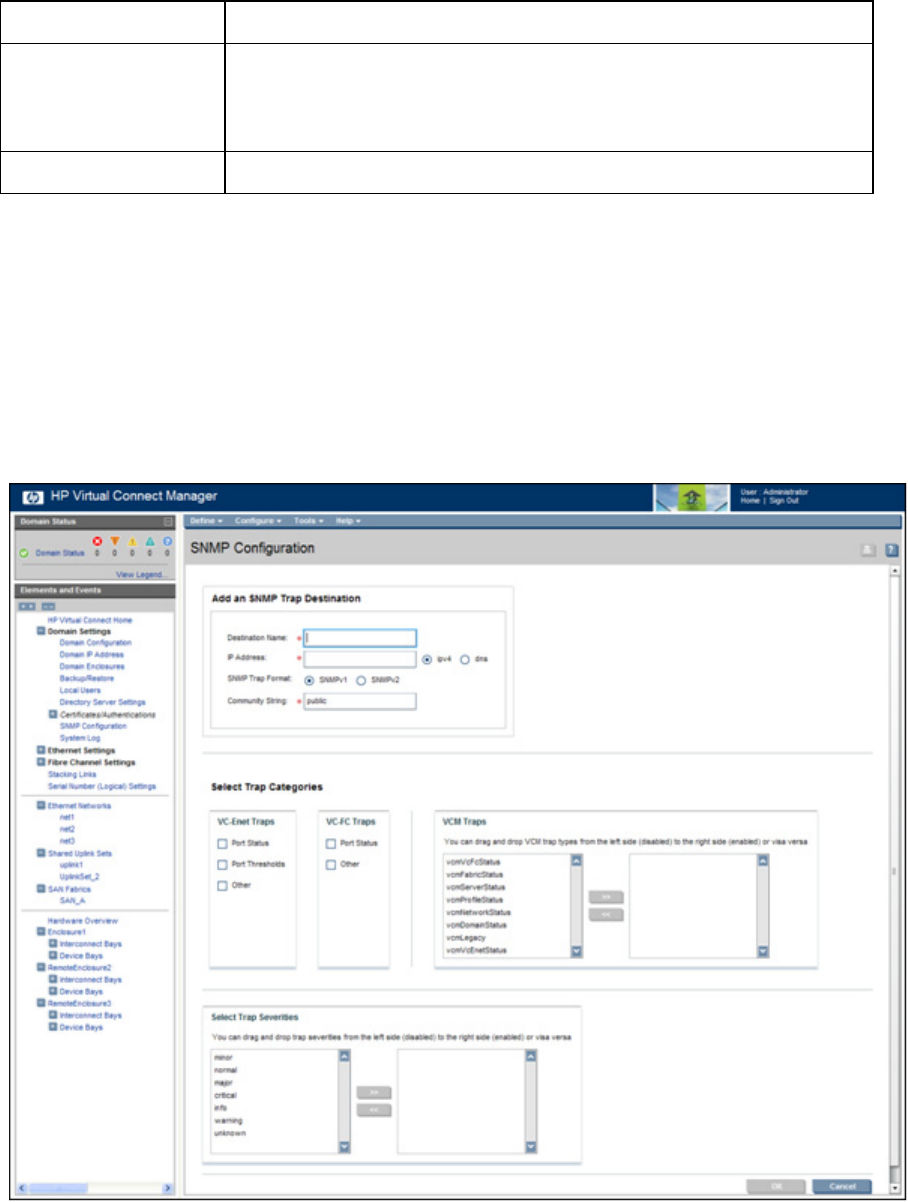Manual
Table Of Contents
- HP Virtual Connect for c-Class BladeSystemVersion 3.01User Guide
- Notice
- Contents
- Introduction
- Overview
- HP Virtual Connect Manager
- Domain management
- Domain overview
- Firmware updates
- Domain Settings (Domain Configuration) screen
- Domain Settings (Domain IP Address) screen
- Domain Settings (Domain Enclosures) screen
- Domain Settings (Backup/Restore) screen
- Domain Settings (Local Users) screen
- Directory Settings (Directory Server) screen
- Directory Settings (Directory Groups) screen
- Directory Settings (Directory Certificate) screen
- Test LDAP authentication
- SNMP overview
- System Log screen
- System Log Configuration
- Network management
- Networks overview
- Define Ethernet Network screen
- Edit Ethernet Network screen
- Ethernet Networks (External Connections) screen
- Ethernet Networks (Server Connections) screen
- Ethernet Settings (MAC Addresses) screen
- Ethernet Settings (Port Monitoring) screen
- Ethernet Settings (Advanced Settings) screen
- Stacking Links screen
- Shared uplink sets and VLAN tagging
- Define Shared Uplink Set screen
- Shared Uplink Sets (External Connections) screen
- Shared Uplink Sets (Associated Networks) screen
- Storage management
- Server management
- Certificate Administration
- Hardware information screens
- Enclosure Information screen
- Enclosure Status screen
- Interconnect Bays Status and Summary screen
- Causes for INCOMPATIBLE status
- Interconnect Bay Summary screen (Ethernet module)
- Interconnect Bay Summary screen (VC-FC Module)
- Module removal and replacement
- Interconnect Bay Overall Status icon definitions
- Interconnect Bay OA Reported Status icon definitions
- Interconnect Bay VC Status icon definitions
- Interconnect Bay OA Communication Status icon definitions
- Server Bays Summary screen
- Server Bay Status screen
- Acronyms and abbreviations
- Glossary
- Index

Domain management 46
Field name Description
Community String
The Community String acts like a password for a given trap destination. The
trap receiving application can use the community string to filter the incoming
traps.
Default: public
Format Format of the new trap. Select SNMPv1 or SNMPv2.
To add a trap destination, right-click on the header row of the destination table, and then select Add
Destination. See "Adding an SNMP trap destination (on page 46)."
To edit or delete a trap destination, right-click on that trap destination row, and then select Edit
Destination or Delete Destination.
To apply changes made on this screen, click Apply.
Adding an SNMP trap destination
To add an SNMP trap destination, right-click on the header row of the SNMP Trap Destination table.
1. Enter a unique name for the new trap being added. No spaces are allowed.
2. Enter the IPv4 address or DNS name for the trap destination.
3. Select the Trap Format: SNMPv1 or SNMPv2.
4. Enter the SNMP trap community string for the specified trap. The default is "public."










